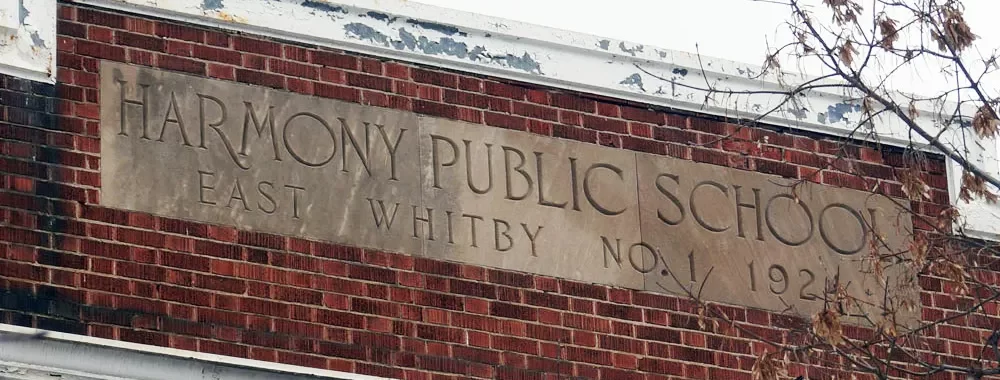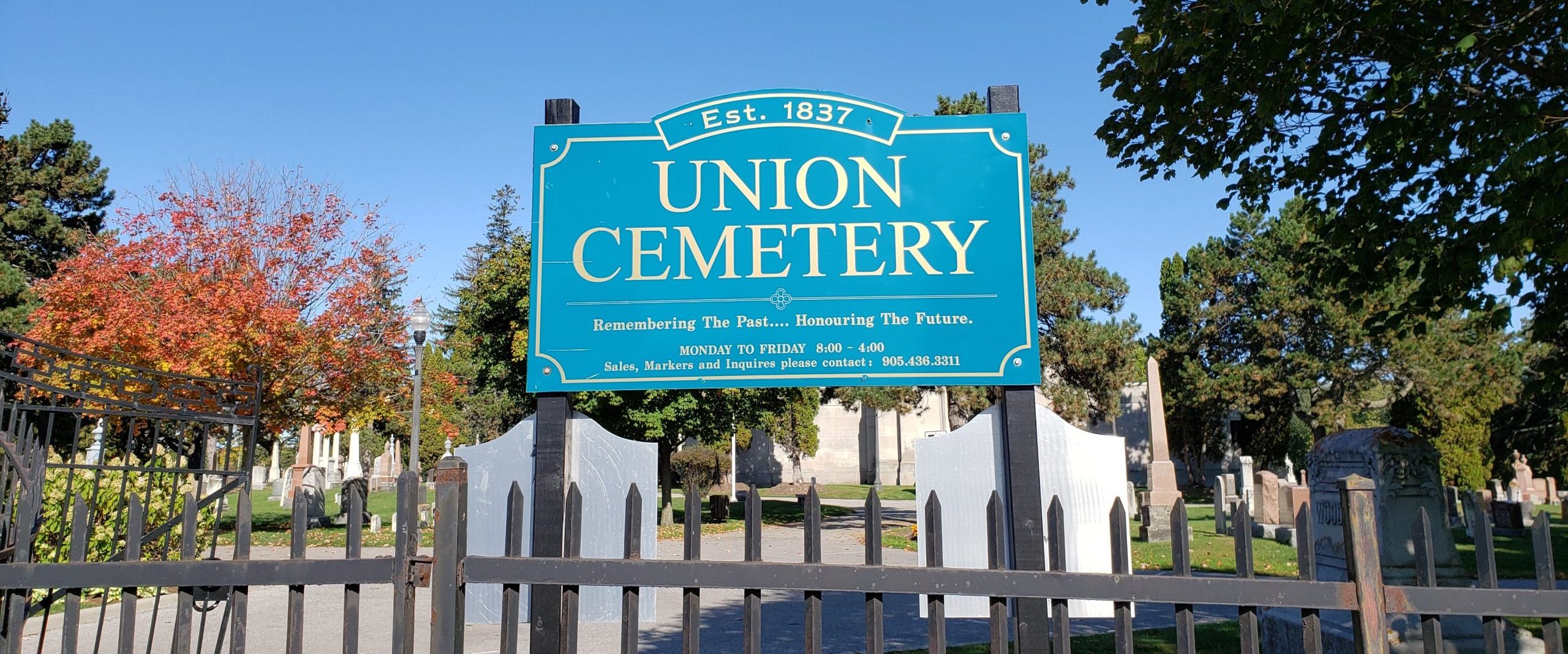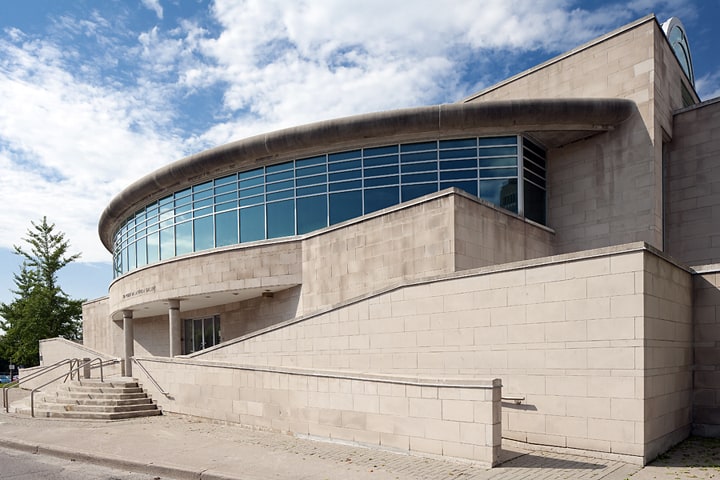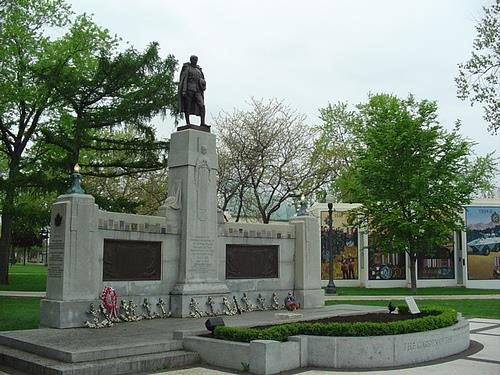Deadline set to preserve century-old school in Oshawa
Published March 14, 2023 at 11:01 am

The last chance to preserve all, or at least part of, a school that has a history dating back more than 150 years will happen in the next six months or so after Oshawa staff completes a Heritage Research report on the former Harmony Road Public School.
The current building was built between 1923 and 1924 – making it as old as the ‘City’ of Oshawa itself – which in turn replaced buildings originally built in 1871 (on land donated by Oshawa pioneer Akeus Moody Farewell) and again in 1890 and 1915. The earliest register for the school (1872) reveals that 58 pupils were enrolled, with 13 of them being Farewells.
The school closed in 2011 with students now attending the newly built Clara Hughes Public School nearby.
Harmony Road School is one of four historic properties sent to staff for reports, with a Provincial government deadline of December 31 to be ‘designated’ as heritage properties or be removed from the Heritage Registry altogether.
The clock started ticking on the deadline because of Bill 23, the More Homes Built Faster Act, which included amendments to the Ontario Heritage Act which came into effect January 1.
The school is the only one of the four that is privately owned and the property owner has made it clear they do not want a historical designation. Colony Real Estate told City staff in 2019 they do not support the designation because it would “restrict the future development potential” of the property.
A subsequent Cultural Heritage Evaluation and Options Analysis from Golder Associates determined the building can be partially demolished (the north single-storey wing and the later 1957 addition, which is not identified as a heritage attribute) and compatibly incorporated into the proposed development without substantially losing its integrity or cultural heritage significance.
Colony Real Estate confirmed later that year the Golder report did not change their opposition to the historical designation.
Harmony Road School is an example of the Classic Revival style, complete with a Greek Doric portico entranceway, and was one of eight schools in existence when Oshawa became a city in 1924.

Union Cemetary
The other three properties that will be getting Heritage Research reports are all City-owned:
- Union Cemetery at 760 King Street West
- The Robert McLaughlin Gallery at 72 Queen Street
- Memorial Park at 110 Simcoe Street South
Robert Thornton, a Secessionist Minister (United Presbyterian), arrived in Oshawa as a missionary from Scotland in 1833 and had the first church in the township built four years later. Most pioneer churches of the day were built on one acre – ‘God’s Acre’ – providing enough space for a church and a burying ground. Thornton’s church had 19 acres and from these pioneer beginnings, Oshawa Union Cemetery has grown to be 32 acres in size with more than 25,000 burial locations. Many of the area’s pioneers and their children are buried in ‘Thornton’s Burying Ground,’ including Col. Sam McLaughlin himself.
Cemetery officials had expressed some concerns to City staff about the historical designation but have been assured the designation is not intended to go to the level of detail that would “frustrate the ability to add graves or markers” or interfere with regular maintenance.

Robert McLaughlin Gallery
The history of the Robert McLaughlin Gallery is far more recent but no less significant. With a sizable donation from the McLaughlin family, the original building was designed by Hugh Allward in 1969, which is now contained within a striking re-design by noted Canadian architect Arthur Erickson in 1987.
The gallery building houses a significant collection of Canadian contemporary and modern art and the largest collection of the Painters Eleven, a group Canadian abstract impression artists primarily active between 1953 and 1960.
Memorial Park is historically significant as the site of the Pedlar People Limited and then its use as a memorial to Oshawa’s war-dead. It is a prominent meeting place and cultural hub located in downtown Oshawa with a cultural heritage value in two significant architectural features: The McLaughlin Bandshell and the War Memorial/Cenotaph.
The 1924 War Memorial/Cenotaph was designed by English sculptor Alfred Howell and is unique for its use of stones representing the Allied and British Empire countries and battlefields pertinent to World War I. It was originally constructed to recognize the sacrifice of Oshawa residents during the First World War.
The Bandshell was a gift to the City from McLaughlin, a celebrated Oshawa philanthropist and industrialist and the founder of General Motors Canada, in 1942 and has provided a venue for outdoor musical performances ever since.

War Memorial at Memorial Park
insauga's Editorial Standards and Policies advertising






